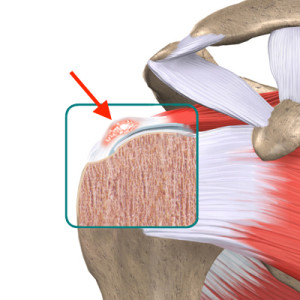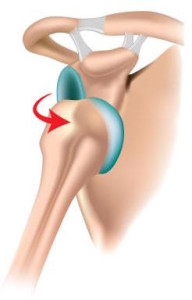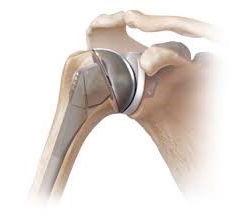Shoulder tendinitis is inflammation of the rotator cuff tendons, especially the supraspinatus tendon. The pain can be unbearable, and often happens at night. The condition is caused by repetitive movements and could eventually cause the tendons to tear. It happens when the arm is lifted above the shoulder, causing the acromion to rub against the tendon. Treatment may be medical (injections, physical therapy/rehabilitation) or surgical (arthroscopic acromioplasty).
Find out more
Find out more
A rotator cuff tear is when the tendons used to move the shoulder joint get torn. The tear may be degenerative (wear and tear caused by repetitive movements; deterioration of rotator cuff tendinitis) or due to trauma (after a fall or inadvertent movement). It causes pain, weakness and loss of mobility in the shoulder. Treatment may be medical (injections, physical therapy/rehabilitation) or surgical (arthroscopic reconstruction).
Find out more
Find out more
Calcific tendinitis affects the rotator cuff tendons, especially the supraspinatus tendon. It causes severe pain, especially at night. It also limits the range of motion in the joint. Treatment may be medical (injections, lavage, physical therapy/rehabilitation) or surgical (arthroscopic removal of the deposits).
Find out more
Find out more
The shoulder joint is naturally unstable and held in place by the combined action of our muscles, tendons and the glenoid labrum. A high degree of trauma can cause the joint to dislocate. If a shoulder has dislocated once, it is much more likely to happen again, which can lead to osteoarthritis. The shoulder will dislocate more and more often, eventually even during every-day movements. There are two treatments: Bankart repair (arthroscopic surgery to restore tension to the capsule and repair the labrum) or Latarjet repair (bone block).
Find out more
Find out more
Acromioclavicular joint dislocation is when the acromion (top of the shoulder blade) separates from the clavicle (collar bone). The separation is caused by a fall onto the ‘point’ of the shoulder (rugby, judo, cycling etc.). Treatment may be functional or surgical, depending on the extent of the separation. Surgery involves an arthroscopic procedure to stabilise the joint. Recovery is simpler than after open surgery to fix the joint with pins.
Find out more
Find out more
Osteoarthritis of the shoulder is a degenerative condition that affects the shoulder joint. It causes pain and stiffness that get worse over time. A shoulder replacement can treat the pain and restore normal movement. There are different procedures (anatomic or reverse total arthroplasty) depending on the type of osteoarthritis. A joint replacement may also be needed for necrosis or a fractured shoulder. Necrosis of the humerus is also an indication for shoulder replacement surgery.
Find out more
Find out more







